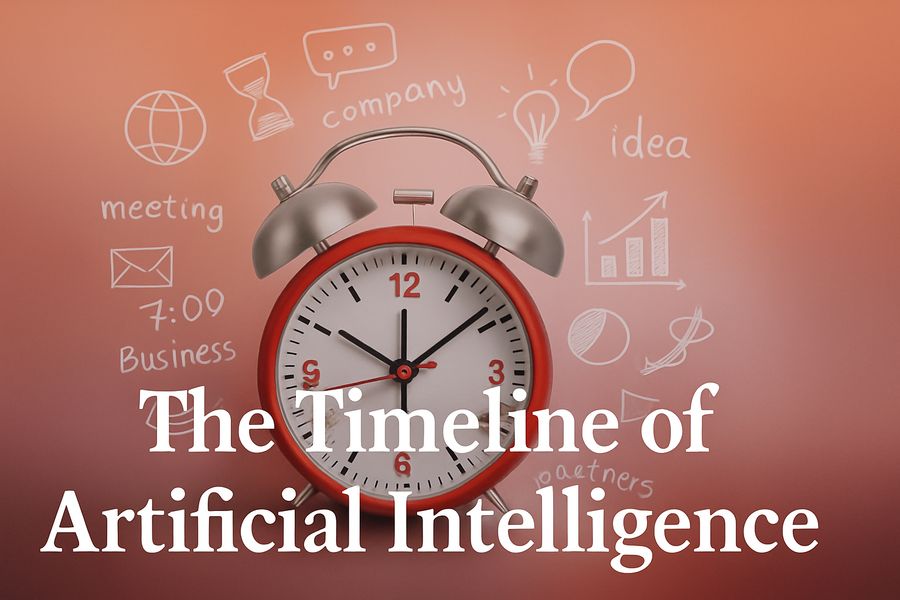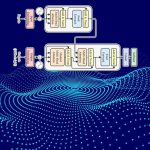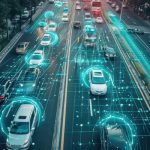🏛️ 1. Ancient Roots and the Dream of Intelligence
Long before computers existed, humans imagined the possibility of artificial beings with intelligence. In ancient myths from Greece, China, and Egypt, mechanical servants or statues with consciousness appeared. For example:
-
🤖 Hephaestus, the Greek god of blacksmiths, forged golden robots to assist him.
-
🐉 In Chinese legends, Yan Shi created a mechanical man centuries ago.
-
🗿 The Jewish Golem, a creature made of clay and brought to life, echoes AI aspirations.
These myths show humanity’s age-old fascination with building intelligent beings — a dream thousands of years in the making.
🧪 2. 1940s–1950s: The Foundations of Modern AI
The seeds of Artificial Intelligence were truly planted in the mid-20th century. Here’s what laid the groundwork:
-
🔢 Alan Turing, a British mathematician, proposed the idea of a machine that could simulate any human reasoning. In 1950, he introduced the Turing Test to assess machine intelligence.
-
🧠 Claude Shannon, the father of information theory, discussed how machines might play games like chess.
-
📚 In 1956, the Dartmouth Conference was held, where the term “Artificial Intelligence” was officially coined by John McCarthy and others.
This era marked the beginning of formal AI research, setting the stage for decades of breakthroughs.
🧠 3. 1960s–1970s: Early Growth and the First AI Programs
This period saw optimism and initial applications of AI:
-
📋 ELIZA, developed by Joseph Weizenbaum in the 1960s, simulated a Rogerian psychotherapist and shocked users with its human-like responses.
-
🚁 AI was used in military projects, like route planning and robotics.
-
🧮 Rule-based systems called expert systems were created to mimic human decision-making in fields like medicine and engineering.
However, the technology was still limited. Computers lacked the power and memory for deep learning, leading to setbacks.
🐢 4. 1974–1980: The First AI Winter ❄️
Hype led to disappointment as progress didn’t meet expectations:
-
🛑 Government funding declined sharply.
-
📉 Many research projects were shelved.
-
🧊 This period became known as the AI Winter, as enthusiasm cooled dramatically.
The challenge was that early AI systems couldn’t handle ambiguity or learn from experience.
🌱 5. 1980s: The Rise of Expert Systems and a New Spring
AI made a comeback in the 1980s thanks to expert systems:
-
🧠 Programs like XCON helped configure computer systems and saved companies millions.
-
💼 AI found applications in business, manufacturing, and diagnostics.
Yet again, limitations in learning and adaptability led to another downturn by the late 1980s.
💡 6. 1990s–2000s: Machine Learning and Intelligent Machines
A shift occurred in AI research — from hard-coded rules to machine learning:
-
🎲 Algorithms learned from data instead of being explicitly programmed.
-
🧠 In 1997, IBM’s Deep Blue defeated world chess champion Garry Kasparov — a historic AI milestone!
-
🔍 AI-powered search engines, like Google, used intelligent algorithms to organize the internet.
This marked the transition toward more dynamic and scalable AI systems.
🚀 7. 2010s: Deep Learning and the AI Revolution
Thanks to big data, powerful GPUs, and improved algorithms, AI exploded in capability:
-
🖼️ Deep learning, using artificial neural networks, revolutionized image recognition, language translation, and more.
-
🎮 AlphaGo, developed by DeepMind, beat world champion Go player Lee Sedol in 2016.
-
🗣️ Virtual assistants like Siri, Alexa, and Google Assistant became household names.
-
🚗 Self-driving technology by Tesla, Waymo, and others moved closer to reality.
AI began to affect nearly every industry, from healthcare 🏥 to finance 💰 to entertainment 🎬.
🔮 8. 2020s: Generative AI and Beyond
We are now in the era of generative AI — tools that can create content, solve problems, and communicate fluently:
-
✍️ AI systems like ChatGPT and Claude can write, teach, and assist in real-time.
-
🎨 Generative models create realistic images, music, and even videos.
-
🧬 AI is used in drug discovery, personalized medicine, and environmental solutions.
-
🧾 Governments and ethics boards worldwide are developing AI regulations to address bias, surveillance, and misuse.
The line between human and machine-created content is becoming increasingly blurred, presenting new ethical and societal challenges.
🧭 What’s Next? The Future of AI
AI is evolving fast. Here’s what the future may hold:
-
🧠 Artificial General Intelligence (AGI): Machines with reasoning ability on par with humans.
-
🕊️ AI for peace and sustainability, helping solve global issues like climate change.
-
🤖 Enhanced robotics in elder care, agriculture, and hazardous environments.
-
⚖️ Deeper focus on AI ethics, fairness, and explainability.
🧩 Final Thoughts
The journey of Artificial Intelligence spans centuries of imagination and decades of research. From ancient myths to modern marvels, AI continues to reshape how we live, work, and think. As we advance into an AI-driven world, it’s more important than ever to understand its roots, evolution, and future direction.
✨ Stay curious, stay informed, and be part of the conversation shaping tomorrow’s intelligence. 🤝


